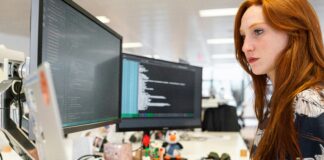Umbilical hernias are among the most common types of abdominal wall hernias, affecting both adults and children. While often considered minor in terms of immediate risk, an untreated umbilical hernia can lead to complications such as strangulation or incarceration. For surgeons and trainees alike, understanding current best practices for surgical correction is essential.
Fortunately, digital learning platforms and surgical libraries have made it easier than ever to access visual, step-by-step guidance. For those looking to observe a high-quality walkthrough, this is an excellent example of how to do a umbilical hernia repair in a video—including a mesh-based preperitoneal technique in open surgery.
Understanding Umbilical Hernias
An umbilical hernia occurs when part of the intestine or fatty tissue pushes through the abdominal wall near the navel. In adults, contributing factors include obesity, pregnancy, ascites, and prior abdominal surgery. While some cases remain asymptomatic, many patients experience discomfort or notice a visible bulge.
Surgical intervention is typically recommended for symptomatic cases, larger defects, or when complications are suspected. For adults, elective repair using mesh reinforcement is widely considered the gold standard to reduce the risk of recurrence.
Open Repair vs. Laparoscopic Techniques
There are two main approaches to umbilical hernia repair: open surgery and laparoscopic repair.
- Open surgery is often favored for small to medium defects. It offers direct access and can be performed under local, regional, or general anesthesia.
- Laparoscopic techniques may be considered for larger or recurrent hernias, offering benefits such as smaller incisions and potentially faster recovery.
Among open techniques, the preperitoneal mesh placement—often referred to as “sublay” repair—has gained popularity due to its balance of simplicity, effectiveness, and low recurrence rates. This method involves placing a prosthetic mesh between the peritoneum and abdominal muscles, which reinforces the area without tension.
The Importance of Visual Learning in Surgery
As surgical techniques evolve, so does the way medical professionals learn. Video-assisted learning has become a cornerstone of modern medical education. Watching real procedures not only helps develop spatial awareness and technique familiarity but also exposes learners to subtle details that textbooks may miss.
For surgeons wishing to deepen their understanding of umbilical hernia repair, access to annotated, narrated surgical videos—especially those created by professionals for professionals—is invaluable. It enables learners to:
- Observe incision placement and tissue handling
- Understand mesh positioning and fixation
- Learn to avoid nerve damage or complications
- Compare open vs. laparoscopic approaches in practice
Web-based surgical education platforms play a crucial role in offering such resources, often complementing traditional academic learning and hands-on training.
Preperitoneal Mesh Repair in Practice
The preperitoneal umbilical mesh plasty, sometimes referred to as the “PUMP” technique, is a refined approach to umbilical hernia repair. In this method, after careful dissection of the hernia sac, a mesh is placed in the preperitoneal space, creating a solid barrier against recurrence.
Key advantages of this approach include:
- Lower recurrence rates compared to simple suture repair
- Minimized postoperative pain due to the tension-free mesh placement
- Faster recovery times in most patients
- Reduced risk of infection when executed under sterile technique with proper planning
It is important that surgeons selecting this method have appropriate training in preperitoneal dissection and mesh handling. Tools such as instructional surgical videos offer useful reinforcement before performing the procedure independently.
Risks and Postoperative Considerations
While umbilical hernia repair is generally safe, surgeons and patients alike must remain mindful of potential risks. These include infection, seroma, hematoma, mesh rejection, or chronic pain at the surgical site.
To mitigate complications:
- Strict aseptic technique must be maintained
- Appropriate mesh materials should be selected
- Patients should be assessed for underlying risk factors like smoking or obesity
Postoperative follow-up is key. Most patients return to normal activities within two to four weeks, although heavy lifting should be avoided during initial recovery.
Training and Continuing Education
As new materials and surgical standards emerge, continuing education remains critical. Surgeons must stay current with:
- Advances in mesh technology
- Updated guidelines from surgical societies
- Techniques supported by current evidence
Platforms that offer curated surgical videos, peer-reviewed materials, and case-based discussions are an important part of ongoing professional development. They also foster a culture of transparency and skill-sharing in a field where precision and safety are non-negotiable.
Conclusion: Precision, Practice, and Patient Outcomes
Umbilical hernia repair may seem routine, but excellence lies in the execution. Choosing the right technique, understanding patient-specific factors, and adhering to best practices directly influence surgical success and recovery outcomes.
Through high-quality educational resources—like demonstrative videos of open preperitoneal mesh plasty—surgeons gain valuable insight into real-world techniques. Whether for new trainees or experienced professionals looking to refine their method, combining knowledge with visual demonstration is a powerful tool on the path to clinical excellence.














